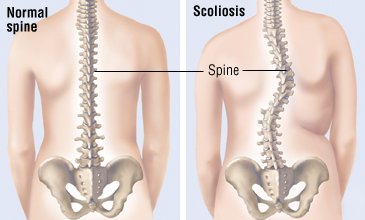Introduction:
Scoliosis is a medical condition characterized by an abnormal curvature of the spine. While many people are aware of scoliosis as a general term, it’s important to recognize that there are various types of scoliosis, each with its own unique characteristics and causes. Understanding these distinct types can help individuals, healthcare professionals, and researchers navigate the complexities of scoliosis and develop appropriate treatment plans. In this comprehensive guide, we will delve into the different types of scoliosis, exploring their definitions, causes, symptoms, diagnostic methods, and potential treatment options. By shedding light on this often misunderstood condition, we aim to raise awareness and promote a better understanding of scoliosis among the general public.
- Idiopathic Scoliosis : Idiopathic scoliosis is the most common form of scoliosis and typically appears during adolescence. It is characterized by a sideways curvature of the spine that develops without a known cause. This section will discuss the different subtypes of idiopathic scoliosis based on age of onset, including infantile, juvenile, and adolescent idiopathic scoliosis. It will also highlight the potential risk factors associated with idiopathic scoliosis, such as genetics, family history, and certain developmental factors.
- Congenital Scoliosis: Congenital scoliosis is a type of scoliosis that occurs due to abnormal spinal development in the womb. It is present at birth and often caused by vertebral anomalies or malformations. This section will delve into the causes of congenital scoliosis, including genetic factors and environmental influences. It will also discuss the importance of early detection, the potential complications associated with this type of scoliosis, and the treatment options available for managing the condition.
- Neuromuscular Scoliosis: Neuromuscular scoliosis is linked to various underlying neurological or muscular disorders that affect the control and balance of muscles in the body. Conditions such as cerebral palsy, muscular dystrophy, and spinal muscular atrophy can contribute to the development of this type of scoliosis. This section will explore the relationship between neuromuscular disorders and scoliosis, highlighting the impact on spine alignment, mobility, and overall quality of life. Additionally, it will provide an overview of treatment approaches, including both non-surgical and surgical interventions.
- Degenerative Scoliosis: Degenerative scoliosis, also known as adult-onset scoliosis, typically occurs later in life as a result of age-related changes in the spine. This type of scoliosis is commonly associated with degenerative disc disease, osteoporosis, or spinal stenosis. This section will discuss the causes and risk factors of degenerative scoliosis, the symptoms individuals may experience, and the treatment options available to manage pain and maintain spinal stability.
- Secondary Scoliosis: Secondary scoliosis is a type of scoliosis that develops as a secondary consequence of another condition or factor. This section will cover the diverse range of causes for secondary scoliosis, including leg length discrepancies, spinal infections, and post-surgical complications. We will highlight the importance of identifying and addressing the underlying cause to effectively manage this type of scoliosis.
Conclusion: Scoliosis is a complex condition with various types, each requiring a tailored approach to diagnosis and treatment. By understanding the different types of scoliosis, healthcare professionals can provide more accurate assessments, patients can make informed decisions, and researchers can continue advancing treatment options. Whether it’s idiopathic, congenital, neuromuscular, or degenerative scoliosis, each type necessitates specialized care. By increasing awareness and knowledge about scoliosis, we can foster empathy, support, and effective management strategies for those affected by this condition.

Average Rating